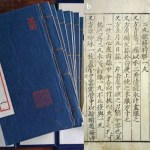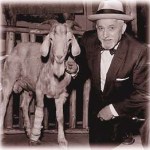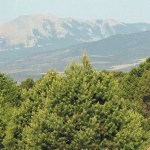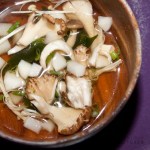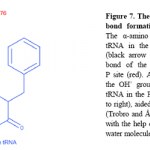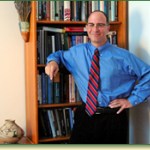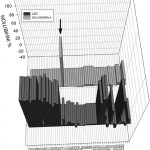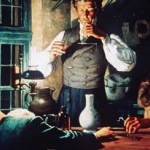Pharmacognosy
Earlier this week, the Nobel Prize in Physiology or Medicine was awarded to Youyou Tu for her discovery of the anti-malaria compound Artemisinin, as well as to William C. Campbell and Satoshi Ōmura for their discovery of a novel therapy for roundworm. Artemisinin, as some of you might know, is a compound derived from traditional Chinese medicine, which is why, to my irritation, it didn't take long for headlines like How traditional Chinese medicine finally won its Nobel Prize, What the 2015 Nobel Prizes mean for traditional Chinese medicine, and A Medical Breakthrough Made Possible By Ancient…
Regular readers know that I hold equivocal views of the broad area of dietary supplements, particularly botanical supplements. On one hand, I have seen some great new compounds come from the systematic investigation of herbal and fungal concoctions to the point that 25% of prescription drugs are derived from natural products. On the other hand, some corners of the dietary supplement industry are little more than turn-of-the-last-century snake oil operations, with offenses so egregious that even their own trade associations try to distance themselves from those who adulterate, mislabel, and…
Reuters and Bloomberg reported earlier this week on an ongoing patent battle (read: pissing match) between Pfizer and Eli Lilly & Co. relating to their erectile dysfunction drugs Viagra and Cialis, respectively.
A US Patent and Trademark Office (USPTO) appeals committee has ruled that an element of Pfizer's patent on sildenafil, the active chemical in Viagra, is invalid because the drug is insufficiently different from a traditional Chinese medicine called Yin Yang Huo or horny goat weed.
At issue is Pfizer's claim to a method for treating male erectile dysfunction. The patent appeals…
Update: New ScienceBlogs colleague, Sharon Astyk at Casaubon's Book, brought my attention to the fact that this local southern Colorado story has been picked up by CNN.
Although I originally wrote this post rather tongue-in-cheek, some scientific evidence has accumulated for the benefits of cannabis in neuropathic pain, cancer pain and nausea, as well as muscle spasticity in multiple sclerosis. For what appears to be a subset of individuals, marijuana is superior to prescription drugs in terms of efficacy and side effect profile. Equivocal results with a standardized cannabis extract…
Earlier this week, I saw one of the best treatments of a misinterpreted story that has me thinking about how all news outlets should report in vitro laboratory studies.
Only thing is that it didn't come from a news outlet.
It came instead from a brainwashing site run by those medical socialist types - I am, of course, speaking of the UK National Health Service and their excellent patient education website, NHS Choices.
You may recall reading in the popular dead-tree or online press that investigators from New York Medical College in Valhalla published in British Journal of Urology…
This post appeared here originally on 31 October 2007
Have you ever wondered, perhaps on 31 October, why witches are depicted as riding brooms?
The answer is alluded to by Karmen Franklin at Chaotic Utopia in her post as to why witches need to know their plant biology.
The excerpts I'm about to give you come from a superb and accessible pharmacology text entitled, "Murder, Magic, and Medicine," by John Mann, host of the BBC Radio 4 series by the same name.
Witches
"Double, double toil and trouble
Fire burn and cauldron bubble" - Macbeth IV, i
Hallucinogenic compounds called tropane alkaloids…
Welcome visitors coming from a recommendation by Dr Carmen Drahl at C&ENtral Science, the blog of the American Chemical Society's Chemical & Engineering News (C&EN):
Terra Sig has a fantastic post about the chemistry prize. The money quote: "If I see electrons being pushed around, it's chemistry."
Thank you for the kind words, Dr Drahl. New readers, feel free to weigh in down in the comments as to your take on this year's Chemistry prize.
The 2009 Nobel Prize in Chemistry has been awarded to three amazing scientists who elucidated the chemical bond-by-chemical bond action of the…
I love it when new readers stumble upon old posts.
Such was the case when I received the following delightful comment from Seattle-based psychologist, Dr Gary Grenell, on my April 2008 post about the passing of Dr Charlotte Tan, a pediatric cancer chemotherapy pioneer:
I was probably in one of her earliest actionmycin-D trial groups for Wilms tumor in 1957. Now at age 55, 52 years later, still going strong!
Most of you scientific youngsters today probably only know of actinomycin D as a laboratory tool for inhibiting RNA synthesis. But here in the following repost, learn about the…
Salvia divinorum (Salvia, Magic Mint) is a plant used for entheogenic purposes by the Mazatec people of Mexico. A relative of the common garden plant "scarlet sage" (Salvia splendens), S. divinorum contains several hallucinogens that include salvinorin A, the first non-nitrogenous agonist known for kappa opioid receptors (KOR).
I had known of salvinorin A since a highly-cited 2002 Proceedings of the National Academy of Sciences paper by Bryan Roth, Richard Rothman and colleagues (full text here). At that time, I had read several anecdotal reports (that I cannot locate now) that the…
When one thinks of a heroin user, thoughts most often come to mind of a person living in squalor in a big metropolitan city or that of an artsy, poetic hipster (while there are many literary works on the life of heroin users, my all-time favorite is Basketball Diaries, an autobiographical account written by Jim Carroll during the ages of 12 to 15. From this description of Carroll's two works on his life with heroin at the catholicboy.com website of Carroll scholar, Dr Cassie Carter: "After reading about 30 pages of the Diaries, [Jack] Kerouac stated that 'at the age of 13, Jim Carroll writes…
A little over a week ago, we posted on the very sad story of the accidental death of a University of Colorado sophomore from ingesting poppy seed tea. The poppy, Papaver somniferum, is the commercial source for prescription narcotic painkillers such as morphine and codeine. The seeds can be had online and in retail stores. The plants can often be grown if these seeds are not roasted or otherwise sterilized.
I had originally suspected that the CU-Boulder student had not used poppy seed tea but rather some other decoction of the plant itself. I had always contended that the seeds did not…
After writing this post, I came across Alex's obituary and guestbook on Legacy.com. By all accounts, Alex was a great kid - loved and admired by many - an accomplished hockey player and musician with a love for the mountains. This could have been you or I, or worse, one of our own children.
Breaking my heart this morning is news from Boulder that last month's death of 20-year-old CU student, Alexander McGuiggan, was from consumption of "opium tea."
Police department spokeswoman Sarah Huntley said investigators believe McGuiggan and others had acquired poppy plants -- which are available…
I just had a chance to check in on a triad of posts by Prof Janet Stemwedel at Adventures in Ethics and Science (1, 2, 3) on the ethical issues of the conduct of studies, particularly clinical trials, supported by the US NIH's National Center for Complementary and Alternative Medicine (NCCAM).
For background, NCCAM was originally established for political, not scientific reasons, as the NIH Office of Alternative Medicine in October 1991. It received a token budget of $2 million at the time. They still only get $120-ish million; modest by NIH standards as compared, say, with the 2007 NCI…
Welcome 4 March readers of The Daily Grail - please be sure to also click on the original post about the DMT article by my colleague, Laura Mariani.
Thanks to Dave Munger & Co's ResearchBlogging.org, I just found a fabulous neuroscience grad student blogger from Emory University: Laura E Mariani at Neurotypical?
Doctor-to-be Mariani blogged last Monday about a paper in Science where the endogenous ligand of the orphan sigma-1 receptor was identified as the hallucinogen, N,N'-dimethyltryptamine, or DMT. The work originated with the group of Arnold Ruoho and colleagues at the University…
Many thanks for some blog publicity go out to Karl Leif Bates, editor of Duke University's online research monthly magazine, Duke Research, and co-founder of Science Communicators of North Carolina (SCONC). Many of you who attended this past weekend's ScienceOnline'09 gathering may recognize Karl as he was in attendance.
Completely independent of any coaxing (Karl was *not* present at my free, Friday Fermentable wine tasting), my post is currently the February 2009 feature on the Duke Research section, Voices: Science in Conversation.
The backstory is that, during our December vacation, we…
I just started receiving a bunch of Google referral hits from readers searching for a story about the US Federal Trade Commission apparently taking regulatory action against a church that is selling supplements claimed to exhibit anti-cancer activities.
The article in question, "Tyrannical FTC Threatens Christian Church with Imprisonment for Selling Dietary Supplements," was written by a gentleman named Mike Adams, an editor at NaturalNews.com. I'm not exactly certain at this point what the specific FTC actions are today since the article is rife with rantings and rhetoric:
The FTC has…
The statin class of cholesterol-lowering agents is rich with history and lessons in the power of natural products, the potential of the prepared mind, and just how precarious the path of drug development can be.
American Scientist, the official publication of the scientific research society Sigma Xi, hosts this issue an absolutely lovely article entitled, "Statins: From Fungus to Pharma."
Expertly and engagingly written by University of Pennsylvania biology professor Dr Philip A Rea, the article launches with the story of a then-young Japanese biochemist, Akira Endo. (Evidence of my…
When medical experimental therapeutics gets co-opted as complementary and alternative medicine (CAM)
Sorry to get to this so late but I wanted to weigh on an excellent post from my cancer blogging colleague, Orac, the other day on the investigation of CAM therapies in cancer. The post covers a lot of ground, as expected from any of Orac's exhaustive missives, but I wanted to focus on the comparison and contracts between NIH's National Center for Complementary and Alternative Medicine (NCCAM) and the Office of Cancer Complementary and Alternative Medicine within the National Cancer Institute (NCI-OCCAM).
I am on record as a strong critic of NCCAM but a supporter of NCI's OCCAM in that the…
Actinomycin D was the first antitumor antibiotic isolated from Streptomyces parvallus cultures by the lab of 1952 Nobel laureate, Dr Selman Waksman, at Rutgers University. However, it took a young Chinese physician and the confidence in her by a future US Surgeon General for this natural product drug to positively impact the lives of children with cancer.
An unusually engaging Boston Globe obituary by Gloria Negri caught my attention this week that announced the death of pediatric oncology pioneer, Charlotte Tan (Hsu), MD, of pneumonia on 1 April in Brookline, MA. Dr Tan's 1959 paper in…
I received a special missive this morning from the Foundation for Biomedical Research that reported the home of UCLA nicotine researcher, Dr Edie London, was vandalized/terrorized by a fire set to a "device" on her front porch. The story now appears at the Los Angeles Times:
London, a professor of psychiatry and bio-behavioral sciences and of molecular and medical pharmacology at the David Geffen School of Medicine at UCLA, uses lab monkeys in her research on nicotine addiction.
FBI spokeswoman Laura Eimiller confirmed that officials with the Joint Terrorism Task Force were investigating the…
